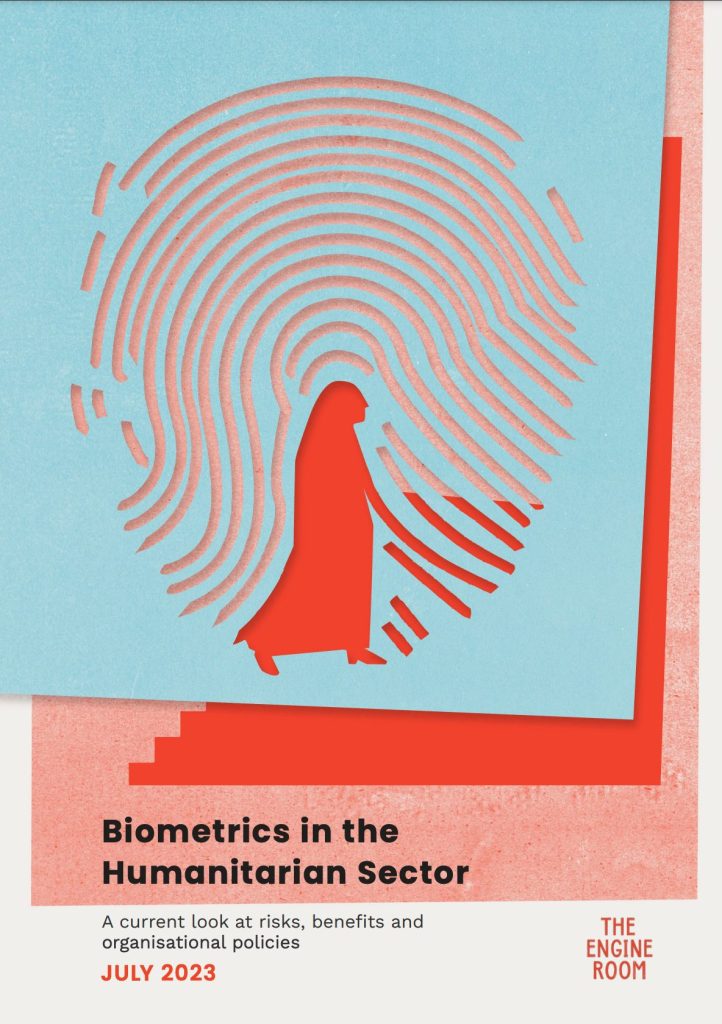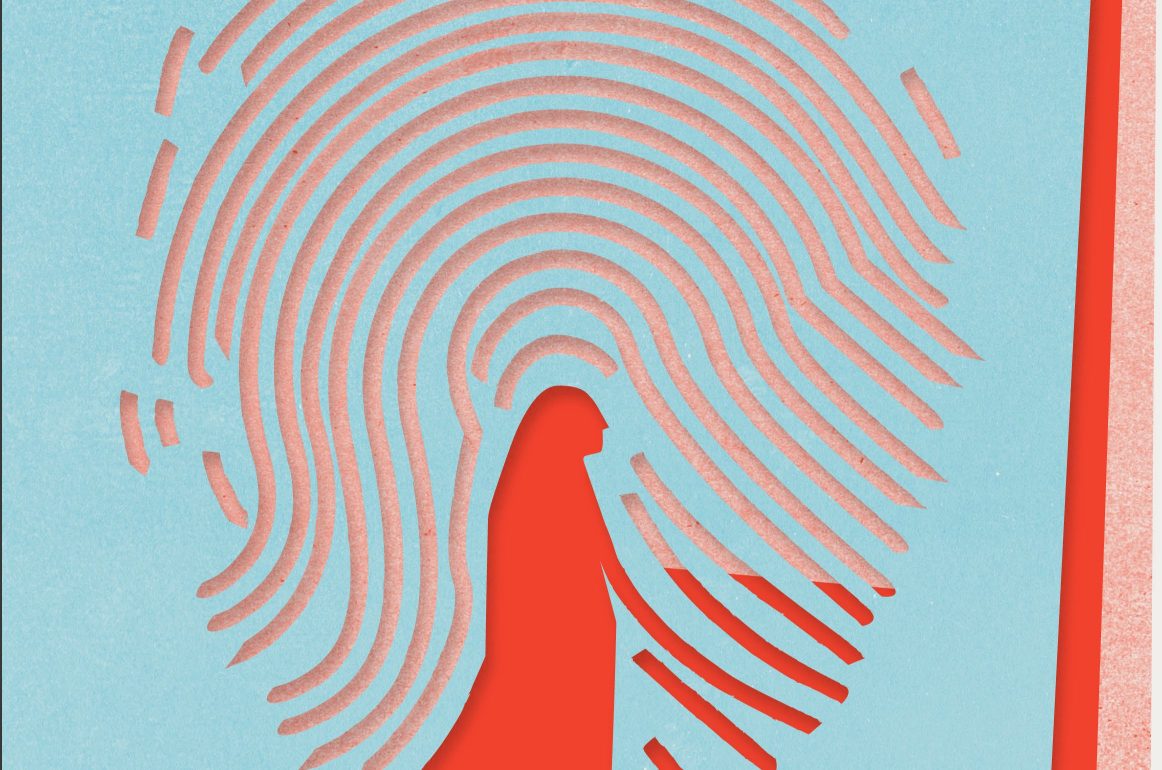Since we last looked into the use of biometrics in the humanitarian sector five years ago in 2018, the technology has become increasingly embedded in humanitarian programming, with sensitive biometric information being collected from vulnerable individuals in an increasing array of contexts, from Bangladesh to Yemen.
Some of the momentum behind using biometric technology in humanitarian contexts has been part of a push toward increased efficiency and more accurate data within the sector. At the same time, however, evidence of harms has mounted, and concerns about risk have increased.
From February 2022 to June 2023 The Engine Room, with support from OSF, took a renewed look at the risks and benefits of biometric collection in the humanitarian sector, examined some of the institutional policies that shape their use, and explored recent use cases.
Our findings point towards the need for a more holistic and responsible approach to the deployment of biometrics in the sector. You can read a snapshot of these findings later in this post, and download the full report below. If you’re new to biometrics or looking to gain more background understanding of what biometrics are and how they are used more generally, start with our accompanying Primer.
Downloads
Downloads
REPORT: Biometrics in the Humanitarian Sector [English, PDF]
PRIMER: Biometrics in the humanitarian sector [English, PDF]

A snapshot of our research findings
Against a backdrop of changing conditions, our research sought to map out differing approaches and understandings of biometric use within the humanitarian sector. From increased investment in biometric technology in the private sector and the still latent consideration of biometric information in data governance frameworks, to the manifestation of harm via non-consensual access to biometric data and the growing cyber targeting of humanitarian organisations, we found a sector in a key moment of flux.
Overall, in the last five years there has not been a cohesive change in how the humanitarian sector approaches the use of biometrics, and a growing divergence has emerged between organisations taking a more restrictive approach to biometric technologies, and those who are continuing to expand their use.
Some of the key learnings from our research include:
- Risks and harms are not fully accounted for. Given the sensitivity of biometric data it is important for humanitarian organisations — with their commitment to doing no harm — to consider potential harms holistically. The majority of current assessments of biometric technologies, however, fail to properly address issues such as function creep.
- The need for more evidence of benefits remains. A fuller accounting of biometric technologies should also include a deeper investigation into the potential benefits of biometric technology. While there has been increased evidence of harms, a more complex understanding and costing of benefits in relation to harms has not emerged, and evidence of benefits alone remains limited.
- Organisational policies lack coherence across the sector, and many do not properly account for the specifics of biometric technologies. Policies offer a window into how organisations are approaching the use of biometrics in their work, we reviewed eight different organisational policies looking at accessibility, specificity, proportionality and implementation. In our research we saw a varied approach in the sector – only two organisations had biometric-specific policies; the remaining six did not.
- Policy implementation is patchy. Having the right policies is only one part of the puzzle — policy success also depends on proper implementation. However we found that a lack of resources and sustained support around policy implementation was resulting in operational challenges, with informal workarounds and disconnects between policies set by organisational headquarters and implementation in regional offices.
- Technical literacy among key decision makers remains a challenge. In order to make informed decisions around the use of biometrics, staff need to be better equipped to understand and engage in nuanced discussions around the technology. Across our interviews we saw that most organisations were struggling with knowledge-building around biometrics, with both programme officers in regional offices and policymakers at headquarters making decisions about biometric technologies and data protection policy implementation without the proper knowledge to do so safely and responsibly.
- Donors continue to encourage the use of biometric systems without providing adequate funding for safety measures. Part of the impetus for the uptake of biometric technologies can be traced back to minority world donors. By stipulating funding requirements and encouraging investment and research in biometrics, these large and influential donors have introduced biometric systems into humanitarian operations without providing the investment and support to enable their responsible use.
What needs to change
Our research showed a clear need to develop a more coherent and responsible approach to the use of biometrics in the sector, and that in order for humanitarian organisations to uphold their commitment and responsibility to impacted communities it is vital that a shared standard is established in the sector.
We suggest five key steps towards a more responsible approach:
- Continued interrogation of the necessity of biometrics
- More nuanced policy design and implementation
- Establishing community-centred standards of practice
- Strengthening practices around Data Protection Impact Assessments (DPIAs)
- More sophisticated, ecosystem-wide analysis of technologies used in the sector
GET IN TOUCH! Our research partnerships provide practical evidence and recommendations to help organisations understand some of the complexities involved in using data and technology in ways that promote social justice. A research consultancy can start with a question! Feel free to email us at hello@theengineroom.org and we can schedule a call to explore your ideas further.
[PAST EVENT] JOIN OUR UPCOMING COMMUNITY CALL
In order to share our learnings with civil society organisations, activists and funders, we’ll be holding a community call on 7 September, 2023.
REGISTER HERE: Thurs 7 September at 10:00-11:00 EDT | 16:00-17:00 CEST | 19:30-20:30 IST.
Come along to hear more about our research findings, hear from other key voices in the discussion around biometric use in the humanitarian sector, and be part of a facilitated conversation on potential new approaches. Anyone with an interest in the topic is welcome – we’d love you to join us!
Image by Surasti Kaur Puri.

